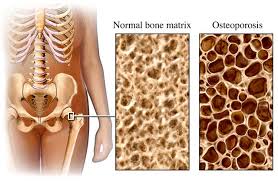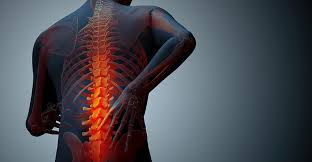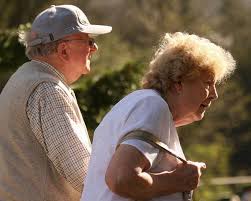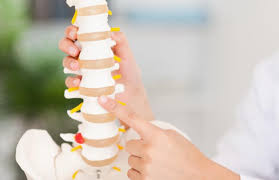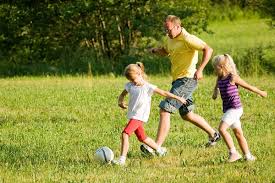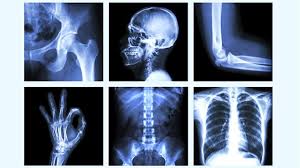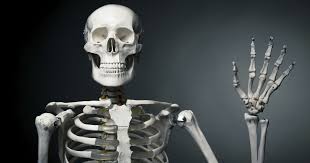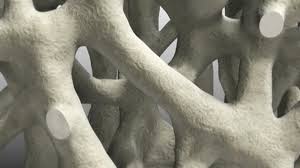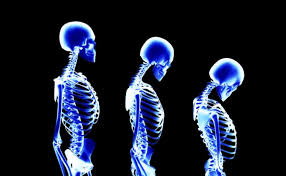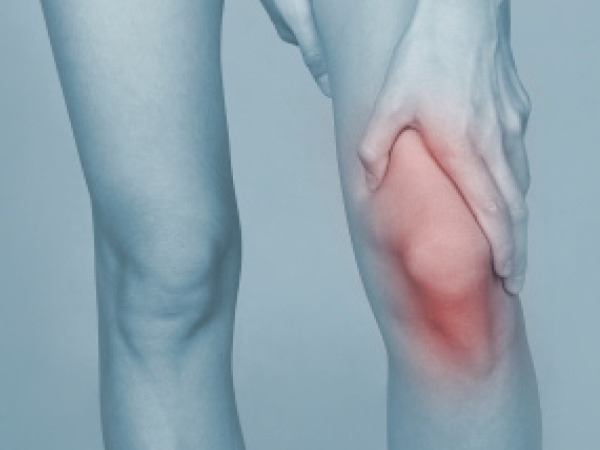Frontpage
FIGHTING OSTEOPOROSIS AND OSTEOPENIA

chiromatrixbase.com
Osteoporosis is quite a debilitating disease that makes bones brittle and crack under slight pressure. The unfortunate part for those who suffer under osteopenia or osteoporosis is that there are no external symptoms until there is an accident and ultimate fracture or broken bone that determine that they, too, have fallen victim to it like one in five women who are in the postmenopausal stages in the United States alone. Osteoporosis cannot be cured fast. Though there are medications that help build bone density, they are way too expensive for an average earner to retiree to be able to afford. Also, the effects of the medication last 2 years at best, and the cycle has to be repeated all over again.
No matter what an individual is going through, it is of utmost importance to stay mentally strong. Having a positive attitude and one where you still feel larger than the disease you are going through will help you cope with it and fight it well enough. Also, you need support around you. Whether it is in the form of near and dear ones or neighbours, someone needs to be there to lend a hand. If you do not know anyone personally, there are various external support groups for osteopenia and osteoporosis so you never feel alone and there are others to share their stories as well.
A key to finding out if you’re at risk of contracting osteopenia or osteoporosis, is to look at family history. Does your mother or any other close female relative suffer from this bone disease? If so, try to detect it early by voluntarily seeking a bone density test that will be able to tell you whether it is normal or below par. If so, start taking precautions and learn to live a healthier lifestyle early on.
Part of living a better lifestyle is to indulge in a lot of exercise. If you are not the kind who hits the gym, then it is a good thing because you can catch some sunlight that is rich in vitamin D and also work up a sweat through a number of ways. While brisk walking the ultimate way to build up strong bones, there are loads of other activities like sports and swimming that strengthen your core. Do not hesitate to be active in your daily life because it will prevent a number of other diseases from occurring later on in life like heart disease, diabetes, arthritis and the like.
Diet is also important in fighting osteopenia or osteoporosis. Why? Because they say you are what you eat. Avoid a lot of sodium as well as processed foods and mostly eat fresh produce and those foods that are rich in calcium. Drink plenty of fresh water and avoid carbonated drinks because just like they erode enamel of the teeth, they also slowly shave off the surface of your bone, thus decreasing its density.
Overall, live a clean life. Avoid smoking as nicotine, though addictive, does nothing good for the body, including your bones. Any medication that you might be taking should be cross-checked with your doctor to determine if their side-effects include decreasing estrogen and testosterone, both of which are important for bone health.
Prevention is better than cure and the earlier you start taking care of yourself and watching for signs of bone issues, the better it will be for your future.
Liked the article about Fighting Osteoporosis And Osteopenia and probably have your own tips and stories that you would want to share? Comment below!
OSTEOPOROSIS AND OSTEOPENIA IN MEN

delawaretoday.com
The decrease in bone density that makes bones porous and brittle and more likely to fracture is called osteoporosis. Usually, it is linked to women, especially those in the postmenopausal stage. In fact, it is true that more women suffer from this than men, but yes, even men have a bone issue, that could range from osteopenia to full-blown osteoporosis. It is said that around 20% of the patients going through osteoporosis are men. But the reason why this happens to them is different from the reason why it happens to women.
Usually osteoporosis is not linked to men because they tend to work harder and do a lot of physical activity or exercise more than women do. Women also tend to live longer than men, so they are more likely to suffer from this bone disease than men.
When it comes to men, osteoporosis is linked to the deficiency of testosterone in the system. This may not make sense because one may ask how is testosterone linked to bone health? The answer is that it is because what the body does is convert testosterone into estrogen that is responsible for building bone mass. Though science doesn’t have the answer yet as to exactly how much of the male hormone is needed to prevent osteoporosis from setting in, what can be certain is that when a man is going through it, one of the main treatments for him is to provide him with medication that has testosterone as one of the main ingredients.
When it comes to preventing osteoporosis from setting in, men can start at an early age to live a more active lifestyle. Deficiencies in calcium as well as vitamin D are the other causes for osteoporosis. And it doesn’t take much effort to keep one’s bones healthy. A brisk walk for 30 minutes every day or so of the week is considered more beneficial for bone health than a rough workout in the gym that involves weight lifting. Additionally, walking in the early morning sun will help with the skin absorbing the vital vitamin D that will make bones stronger and prevent osteoporosis.
There are other conditions that are linked to osteoporosis. Taking medication for these other issues could have an effect on the bones because of the decrease in testosterone in the system. Always consult with your doctor and research these matters yourself to understand all the possible side effects of your medication. In fact, even smoking can cause osteoporosis and according to 10 studies conducted internationally, smokers are at a 55% higher risk of obtaining fractures linked to smoking as nicotine affects the bone cells, thus making bones more brittle.
It is imperative to lead a healthy lifestyle as soon as possible. Eating foods that are rich in calcium and vitamin D is important. One can take supplements for the same, but ensure that you consult with your doctor about dosage and the right kind of tablets for you. Exercise goes a long way as well. Hitting the gym is a good idea and especially when living in city areas, it seems like a logical option. But a brisk walk out the open, close to nature is an experience that rejuvenates body as well as mind. Going out in the early morning sun is recommended because this is the time that the rays are giving off a lot of pure vitamin D that will soak into your skin faster. Avoid any habits, like smoking, that one knows is detrimental to health, because you’re body needs to work at its optimum level even in later stages of life.
Liked the article about Osteoporosis And Osteopenia In Men and maybe have your own tips or stories that you would like to share? Comment below!
OSTEOPOROSIS AND OSTEOPENIA SUPPORT
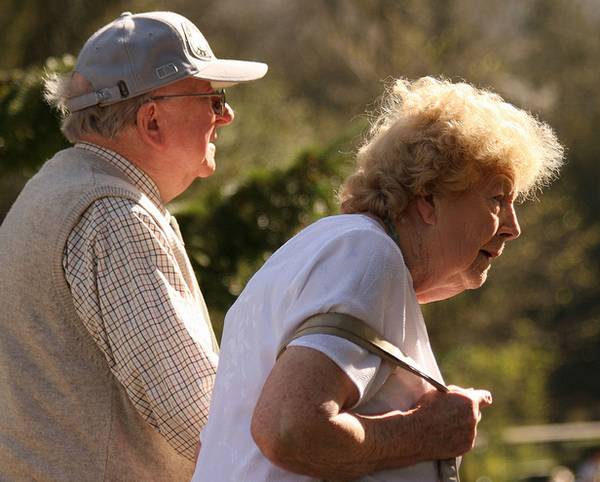
osteoporosistreatment.co.uk
As with any sickness, whether it is minute or is threatening to take over your life, it’s always easier when you have someone to share the burden. When it comes to a debilitating disease like osteopenia and osteoporosis, the feeling is the same; it is better to have someone sharing your pain and able to understand what you are going through. It is more difficult to walk the difficulty alone.
There are many ways that you can get support to beat the illness. The most convenient way is through your family, relatives and other loved ones. The support group beyond that is through neighbours, though they would probably be around to help with daily needs like grocery runs and other errands. No matter who is around you at this difficult time, it is important that you share what you are going through, because others do not experience the pain that you do and may not understand it unless vocalized.
Almost as much as it affects your physical life, osteopenia and osteoporosis also affects your mental life. Especially in the early stages, like when you just discover this life-altering disease, your mental health is also important and you must keep your peace to prepare yourself for the journey. That is the reason why doctors recommend almost immediately after the diagnosis, that you attend an outside support group of other patients that are dealing or have dealt with the same issues that you are facing, so that together you can walk through the difficult phase. And doctors are right – through various studies of those going through serious health issues like osteoporosis, those who have support around them are more likely to improve and recover, while keeping their mental health intact as well. There are many online groups and communities, in case you don’t want to travel outside your home that will help you through it all. Never feel that it is ok to try and manage everything on your own and get as much support as you can at the earliest.
Another proven way to alleviate your mental stress is to share. When you talk to others about what you are going through or when you lend support to others who are feeling the same way you do, you feel that you are not alone and that really helps with unburdening. You can offer voluntary service to homes and non-profit organisations and hold support group meetings and the like. Also, there are many blogs and websites that offer tips and outer support that you should not hesitate taking advantage of.
Osteopenia and osteoporosis is not easy to handle especially if the attack was sudden and there was no former indication. Also, if fractures and broken bones have played a part, then it is in fact beneficial to share your story so other people get to know about it as well and you may never know who will benefit from it. But the important thing is to never try to hide or feel that you are alone, because that is in fact misleading and will only make you suffer all the more.
Liked the article on Osteoporosis And Osteopenia Support and have your own tips or stories that you would like to share? Comment below!
PREVENTION – KEEP OSTEOPOROSIS AND OSTEOPENIA AT BAY

berkeleywellness.com
They say that prevention is better than cure. And they are absolutely right! Once a patient has been diagnosed with osteoporosis, it is difficult, if next to impossible for the patient to ever fully recover. Yes, the density of bones my increase and bones may get stronger, but that does not mean that osteoporosis has been fully cured. What it could mean, however, is that it has come down to a less-risky level called osteopenia.
Taking care of bone health should be something that should start from a very early age. By the time a woman is between the ages of 25-30 years, her bone density should be at its peak. If at this time it is discovered that it is below the level than it should be, means the woman is at higher risk of suffering from osteopenia by the time she is in the postmenstrual stage of life.
When a woman is between the ages of 30-35, she begins to lose more bone density than she can create. Imagine that! So if a woman, say at the age of 25 was not at the peak of bone strength and then again at the age of 30 she finds herself losing more than gaining from her bones, she will almost absolutely be a victim of osteopenia, if not full-blown osteoporosis. A scary factor of this bone disease is that there are no symptoms. Only if and when a bone fractures or is broken can the severity of it can be concluded. Doctors recommend regular bone density scans to keep osteoporosis at bay, and this is the first preventive tactic.
As children, one may be fussy to drink a glass of milk, or one may be lactose intolerant. That is ok. The importance of drinking milk is because it contains vital amounts of calcium which is what bones are mostly made of! So if milk cannot be consumed, there are other substitutes from food and also supplements that can be taken that will replenish the calcium supply in the body. Another important thing to remember is that one should avoid caffeine and carbonated drinks as much as possible. The reason being that these ingredients erode bone mass which is detrimental to preventing osteopenia and osteoporosis.
Vitamin D is another vital element that builds bone mass and the best way to get it is by soaking in the early morning sun. Daytime sun is harmful for skin and can cause skin cancers, but the rays from the just-risen sun are packed with vitamin D that no supplement can compare with it. Also while you go out to get your rays of sunshine, a brisk walk for around 30 minutes wouldn’t hurt either. This also helps to strengthen bones. So, lots of vitamin D and exercise are the other preventive measures for osteoporosis or its earlier onslaught, osteopenia.
Basically, a healthy lifestyle goes a long way in keeping bones strong and healthy. The lifestyle that people currently live is what is causing the skyrocketing rates of osteopenia and osteoporosis. Simple changes like walking instead of driving, drinking and eating fresh produce, taking supplements for the vitamins and minerals that cannot be consumed and getting scans and medical check-ups can seriously make prevention better than cure.
Liked the article on Prevention – Keep Osteoporosis And Osteopenia At Bay and maybe have your own tips, ideas and stories that you want to share? Comment below!
REVERSING OSTEOPOROSIS AND OSTEOPENIA
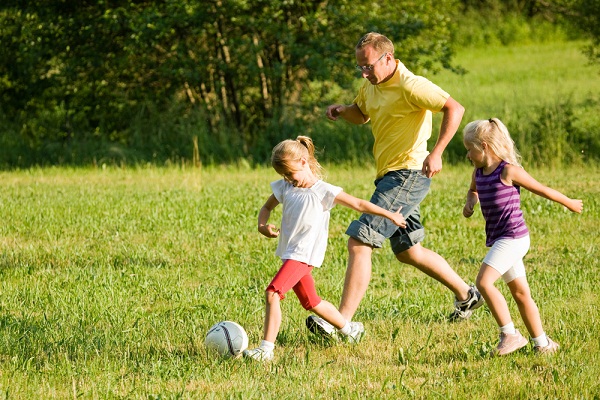
socialh.com
There isn’t a simple answer as to whether one can reverse osteoporosis. There are different stages to this bone disease. The first is osteopenia. This is the earliest stage of osteoporosis that causes bone mass reduce and bones to become brittle. At this stage it is much easier to reverse osteopenia by eating healthier, exercising and going through stringent medication to bring bone mass back. But for those who are at the chronic to severe stages of osteoporosis, it might not be that easy, but it is still possible.
There is a process known as resorption where, through medication and other techniques, bone mass is not allowed to further reduce, but stay at that level. From there, it is easier to build bone mass back up, but the process is still longer than if the patient’s health was taken care of since a much younger age.
When it comes to osteoporosis, it is best to consult a doctor as medication seems to be the only true cure for actually reversing osteoporosis. However, the more severe the bone disease is, the less likely it will be for a patient to get cured. Taking a look at osteopenia, the earliest stage of osteoporosis, there are a few measures to reversing it and getting back on track. But it is a long process and requires a change in lifestyle.
- Exercise: It is said that women do not exercise as much. But you need to keep aside at least 30 minutes a day for brisk walking. And if you do it in the early morning, that is a bonus. The rays from the just-rising sun are packed with vitamin D and the walk will help strengthen your bones and prevent osteopenia.
- Avoid Caffeine: Drinks that are filled with caffeine like coffee or soda pop are not good for health, even though they may give you a temporary boost in energy. Just as studies have shown that they wear out the enamel on teeth, so also other studies suggest the same with bones leading to osteopenia. Drink plenty of water to flush out toxins and fresh foods for long-lasting energy.
- Be Careful about Medication: The early on-set of osteoporosis which is osteopenia can happen because you are taking medication for other diseases and sicknesses. While they may be helping you overcome other problems, they might be reducing estrogen, testosterone and other hormones responsible for healthy bones. Consult with your doctor and take supplements so that the hormones can be built up again. Preventing osteopenia from occurring will ultimately save you from the bigger sister, osteoporosis.
- Calcium and Vitamin D: Starting good habits when you’re young will go a long way. Even if you’re starting late, a good balanced diet that includes lots of calcium and vitamin D in it will help strengthen bones and keep osteopenia away. Once again, consult with a doctor to find out the right dosage for you. Go out in nature and soak up some sun as this is the best source for that much-needed vitamin D.
Preventing osteopenia, and ultimately osteoporosis from becoming a disease you have to live with and which can be very painful, is not difficult if the right kind of lifestyle is followed. There have been rising cases of osteopenia and osteoporosis in recent years where it is estimated that 50% of postmenopausal women will be suffering from it. This is because people are so busy taking care of the outer things of life, especially women that they forget to take care of themselves. Simple changes to your lifestyle like including exercise, eating healthy, regular doctor visits, etc can go a long way and keep osteopenia away.
Liked the article about Reversing Osteoporosis And Osteopenia and maybe have your own tips and stories that you would like to share? Comment below!
RISKS INVOLVED WITH OSTEOPOROSIS AND OSTEOPENIA

agoramedia.com
There are many reasons why a person would get affected by osteopenia or osteoporosis. These days, the number of patients falling victim to this bone disease are staggering. The population at the highest risk of osteopenia and osteoporosis is women who have crossed the age of 55 years and are at the postmenopausal stage. The reason why they are at higher risk at this stage will be discussed in a bit. However it is estimated that in the United States alone, 1 in every 5 women will be a patient of osteopenia or the more severe osteoporosis in her lifetime. This statistic is very alarming.
A woman reaches the peak of bone density between the ages of 25-30. If at this time she falls below that line that means she has just upped the risk factor in her getting osteopenia if not osteoporosis. After a woman reaches the age of 30, her bone density diminishes faster than it can grow back. It is at this stage that the stages of osteoporosis start showing up, beginning with osteopenia. The unfortunate part is that there are no outward symptoms of osteopenia. Only when a woman has an injury and a resultant bone fracture, is she then diagnosed with the bone disease. So, it is imperative that after the age of 25 years, regular bone density checks are made to combat the onslaught of osteopenia or osteoporosis.
Estrogen is the hormone that is responsible for building bones in the body. In the postmenopausal phase, there is an imbalance in this hormone which causes women to be at a risk of getting osteopenia and osteoporosis. It is important, therefore, for a woman to consult a doctor at this stage to ask for medication that can ease that hormonal imbalance. Another important thing to remember is that if there is any other disease being suffered by the patient, she should check with her doctor to see if there are any hormones involved in the medication. Sometimes medicine will cure one illness but will give rise to another, and this is another way of putting a woman at risk of osteopenia and osteoporosis.
You need to also check your family history. If there are women in your family who have had osteopenia or osteoporosis, then go through regular bone density checks for osteoporosis. Hormonal imbalances run the in the family, at this might be a sign that you are at risk. Another factor is based on race. Studies suggest that Caucasian and Asian women are at a higher risk of suffering from osteopenia and osteoporosis as well as those who have smaller body frames.
Whatever medical reports suggest, it is always important to inculcate a healthy lifestyle from an early age. The earlier on you start to take care of your health by eating healthy, not developing bad habits like smoking and drinking alcohol, exercising, etc the less likely you are to fall prey to one of the silent diseases that doesn’t seem life threatening and yet is taking over the world by storm. Osteopenia and osteoporosis are not easily curable and take time and constant upkeep to maintain bone density. Do not ignore your health and consult doctors at the slightest sign of bone deformity.
Liked the article on Risks Involved With Osteoporosis And Osteopenia and maybe have your own ideas and stories that you might want to share? Comment below!
FACTS ABOUT OSTEOPOROSIS AND OSTEOPENIA

dailyhealthpost.com
Osteoporosis is a bone disease that causes bone mass to deplete without getting replenished and due to this, bones become porous and brittle and that leads to the ultimate fracturing and breaking of bones. The earlier onset of osteoporosis is called osteopenia and is more likely to be curable than full blown osteoporosis.
Those who suffer from it are most of the time not aware about it until there is a mishap and a bone easily cracks or breaks. Hence it is essential to go for regular bone density check-ups to make sure that you are on the right track.
Women are more likely at risk of osteopenia and osteoporosis especially in the postmenopausal stage of life. This is because the female hormone estrogen is involved in aiding the building of bone strength. But during this stage, there is hormonal imbalance due to which bones are more likely to become brittle.
Studies are still going on to find out for sure who are more at risk. But at the moment the conclusion is that if you know someone in your family, like an aunt or your mother who has gone through osteopenia or osteoporosis, then you might get it as well. That is because low bone density may run in the family. Also, if you have a tiny frame and calcium deficiency from an early age, then you may fall victim to it. The best way to find out the risk factor for osteopenia and osteoporosis is to get regular bone density scans, starting by age 25 when it should be at its peak.
Another unfortunate fact about osteopenia and osteoporosis is that they cannot be detected because they do not have any outer symptoms. Apart from a bone density scan, there is no other way that a patient can tell if they have fallen victim to this bone disease. But the earlier you start to first of all, live a healthy lifestyle and eat foods that are rich in calcium and vitamin D and second of all, go for regular medical scans, then you made aware in advance about your risk and can take action accordingly.
Though osteopenia and osteoporosis are said to affect women, men are not spared either. They also may be victim to it, but their chances are slimmer. The reason being that men indulge in a lot of physical activity that helps strengthen bones. However, if they suffer from any other medical issue like prostate problem and need to take some medication for it, they need to consult with a doctor to determine whether this will reduce testosterone in their system and ultimately lead to osteopenia or osteoporosis and take supplements accordingly.
Living a healthy life and maintaining a balanced diet while cutting out bad habits like smoking and drinking alcohol excessively seem to be the only way to reduce the risk of being a patient of osteopopenia and osteoporosis. Though this is not the only solution since there are other factors that play a part, going for regular check-ups will also keep you prepared.
Liked the article on Facts About Osteoporosis And Osteopenia and have your own views to share? Comment below!
TIPS TO TREAT OSTEOPOROSIS AND OSTEOPENIA

healthnation.com
Treating osteoporosis is quite a long process and getting cured may not happen overnight, from a medical perspective. In case you suffer from the earliest stages, called osteopenia, then it will be easier to cure, but it’s not a once-in-a-lifetime solution. Constant care and attention need to be taken because after the age of 30 you start losing bone density faster than you can gain it back.
Treating osteopenia or osteoporosis is simple to remember: CDE which stands for Calcium, Vitamin D and Exercise. Apart from these, we will briefly look at other ways you can treat it.
Consumption of Calcium can be done either through eating calcium rich foods or taking supplements that have it as their main ingredient. Calcium is very important for bone health and a habit should be made to consume it regularly as part of a healthy diet plan. Vitamin D is present in fresh produce, but not as a strong nutrient. It is just there in traces. The best way to get vitamin D into your system is to obtain supplements that specialise in vitamin D. But again, this is manufactured pills. The natural way is to go out and get some sunshine. The rays of the early morning sun are rich with vitamin D and will not harm the skin at the same time. Exercise also works. If you have osteopenia or osteoporosis and are scared of injuring yourself under a hardcore workout regimen, then just go for a daily brisk walk for at least 30 minutes and engage in other activities that have lower risks of getting hurt.
Treating osteopenia and osteoporosis should start with your doctor. Never self-medicate or deny the gravity of the disease. It does not have any external symptoms, so you don’t know if you are getting cured or if it’s getting worse. Your trusted doctor will keep a track and let you know. If you have any other medical issues along with osteoporosis, then make sure that you let your medical practitioner know about it. The reason being, any medication that involves the reduction of estrogen and testosterone from your system is a bad idea. Both these hormones are responsible for increasing bone density and they will greatly affect you, even if they are curing another illness.
There are many other treatments that you can turn to, but they tend to be quite expensive and do not last a lifetime. Their effect will wear off in a couple of years. But if you still want to go for it, find out first if they are covered under your medical insurance plan and then book the appointment.
The best and most effective way that you can combat osteoporosis and osteopenia is if you start making efforts before its attack. Live a healthy lifestyle and curb or cut out any bad habits as they have lasting negative effects. Take regular check-ups like bone density scanning and the like and also see if the females in your family are affected by it. Then you can assume that you would be at a higher risk. But never walk the road to recovery alone. Find a support group to keep you positive and research extensively on the topic yourself.
Liked the article about Tips To Treat Osteoporosis And Osteopenia and maybe have tips or stories of your own that you would like to share? Comment below!
TRAVELING WITH OSTEOPOROSIS AND OSTEOPENIA

inquisitr.com
Osteoporosis is a disorder that involves the sheer brittleness of bones. Those who suffer from it generally cannot function in everyday activities due to the risk of severely cracking bones or shattering them altogether. Because of this, it is usually advisable to not travel for long distances, though even every day commute can pose a serious risk. Here are a few pointers to remember while travelling, if you suffer from osteoporosis or know someone who does:
- It is still fine to travel with osteoporosis. Unlike those who suffer from arthritis and other joint and blood dysfunctions, osteoporosis patients can travel long distances for any lengths of time, as long a precautions are made as to minimising any risk of bone damage due to its fragility.
- When travelling, an osteoporosis patient cannot partake in a lot of movement or activities that are vigorous in nature. Bones at this stage are very delicate and a slight mishap can have dire consequences. Those who suffer from it should find comfortable modes of transport and be careful when walking, climbing or manoeuvring unknown terrain.
- Before travelling, good precautions should be taken to make sure that there is comfort travelling and resting. Chairs and transport should have sufficient padding and cushions and the seating arrangement should be such that not a lot of activity happens around which may lead to some bumping that would be able to fracture a bone.
- Unfamiliar terrain that is involved with osteoporosis is generally not recommended. Beforehand, measures should be taken to familiarize one’s self with how simple every day things like a bumpy sidewalk or mountainous region can be hazardous for the patient.
- Those who may have just gone through a fracture in the bone and not quite healed yet, should avoid travelling altogether unless the setting is in place. Additionally, one must avoid travelling alone or with someone unfamiliar with the condition. All precautions must be taken while travelling, including good surrounding medical facilities in case of a mishap.
- If there is any discomfort, the patient suffering with osteoporosis must not suffer in silence. Letting those around you take care of you is very important since even a small sign can mean that something is going wrong. Always let those around you know well in advance that you or your loved one is going through this condition so that others may avoid be careless during the tenure of travel.
- If there is any medication provided by an expert that needs to be taken regularly, make sure that time is adjusted in case of foreign travel to fit the time of medication intake. It is imperative to do as your doctor or certified medical practitioner has requested you to do, because medicines are given for a reason.
Living with osteoporosis doesn’t mean that you can’t enjoy life. One needs to be confident and not confine oneself to be housebound. But being cautious as well will go a long way.
Liked the article about Traveling With Osteoporosis And Osteopenia and maybe have your own tips or stories that you would like to share? Comment below!
WHAT IS OSTEOPOROSIS AND OSTEOPENIA?

indiatimes.in
According to the medical dictionary from Merriam-Webster, Osteoporosis is a condition that affects especially older women and is characterized by decrease in bone mass with decreased density and enlargement of bone producing porosity and brittleness.
To make it simple, osteoporosis is the bone disease that reduces bone density, making bones porous and brittle and therefore more likely to fracture or break. The earlier onset of osteoporosis is osteopenia and these affect 1 in every 5 women in the United States alone. It has no direct effect on health as such, but makes a patient highly prone to painful bone fractures with the slightest mishap. It can also prove to be fatal, with those suffering losing their lives because of an unhealed broken bone and the resultant blood clot and the like.
The unfortunate part about osteopenia and osteoporosis is that both are not detectable until the victim suffers a bone related injury and then the diagnosis is given. There are many preventive measures that can be taken and in doing so, maybe the victim will suffer from osteopenia which is relatively curable compared to the more serious osteoporosis that needs constant medical attention. A woman reaches her bone density peak between the ages of 25-30 and if at this time a bone density scan is taken, she can determine if in future she will be at risk of developing osteopenia or osteoporosis. If the bone density is low, then she is at high risk. Post the age of 30 your bone density will reduce as compared to how much it can build back up. Regular medical check-ups seem to be the best answer to preventive measures.
A healthy diet as well as an active lifestyle also help with keeping osteoporosis at bay. However, muscle building is not to be confused with bone strengthening. While hitting the gym means more concentration on muscles, for osteopenia and osteoporosis, this will not be a preventive measure. However, exercises that include a brisk walk or active sports will help it. Eating foods that are rich in calcium, vitamin D, vitamin K and other nutrients necessary for bone building will play a major role keeping osteopenia and osteoporosis at bay.
Another important factor to remember is about the medication you take. Since those who fall victim to osteopenia and osteoporosis are in the postmenopausal stage, they tend to have other illnesses as well and may be taking medication for that. But if your medication encourages the reduction of the hormone estrogen, then you are more likely to develop osteopenia because of that, or worse, osteoporosis. This is because estrogen is the main hormone responsible for bone building and strengthening. If you must still take your medication, then it is suggested that you also consume supplements that will make up for the loss.
The earliest detection of osteopenia or osteoporosis will help you take measures to prevent further bone loss, if not build bone mass back up immediately. The medication that is involved with resorption or stopping further loss of bone mass is expensive and has to be renewed every couple of years. Osteopenia and osteoporosis are silent killers with an alarming number of victims that will never be able to function to their full capacity. Living a healthy lifestyle and making sure that you go for regular medical check-ups seem to be the only way to prevent yourself from being the next victim.
Liked the article on What Is Osteoporosis And Osteopenia and maybe have your own tips and stories that you would like to share? Comment below!
